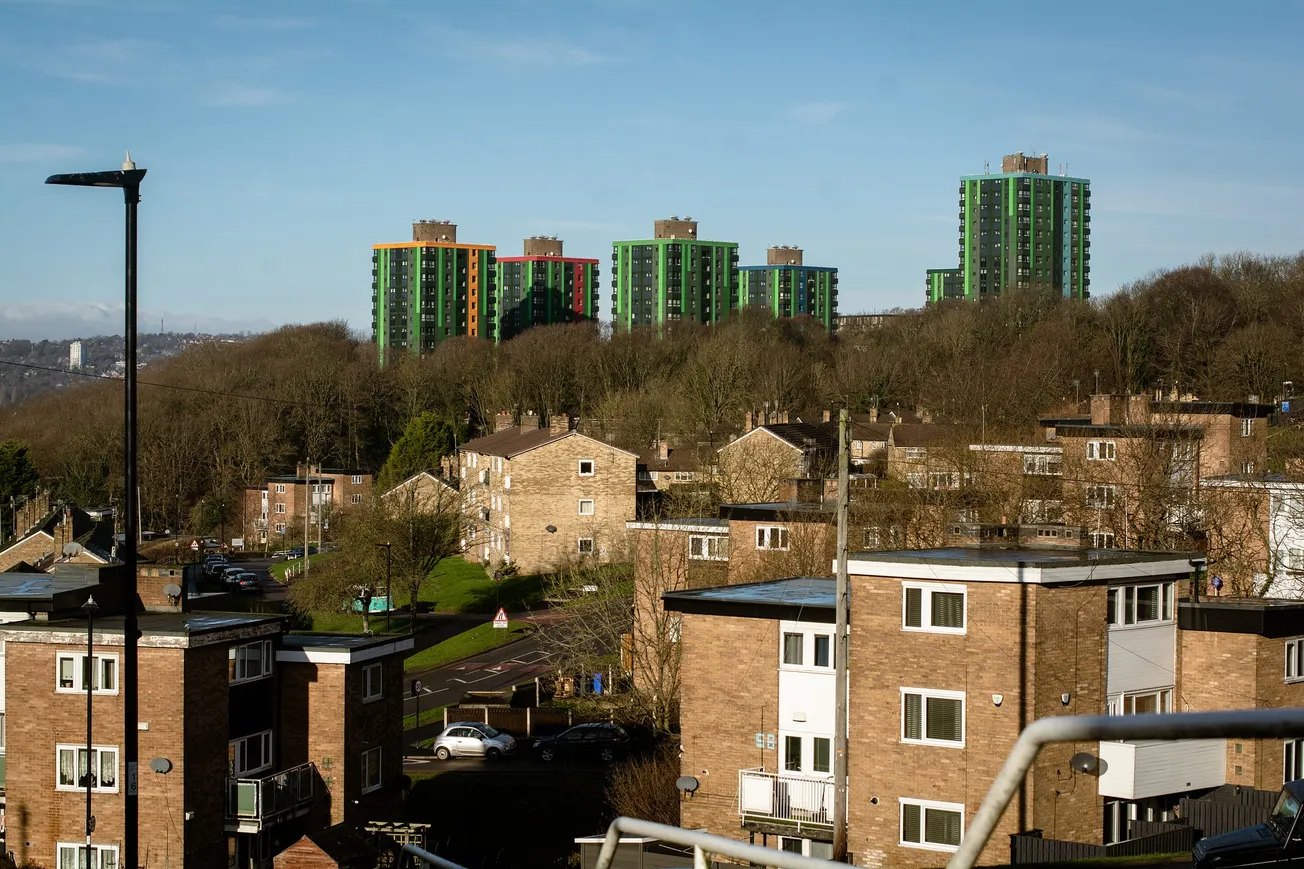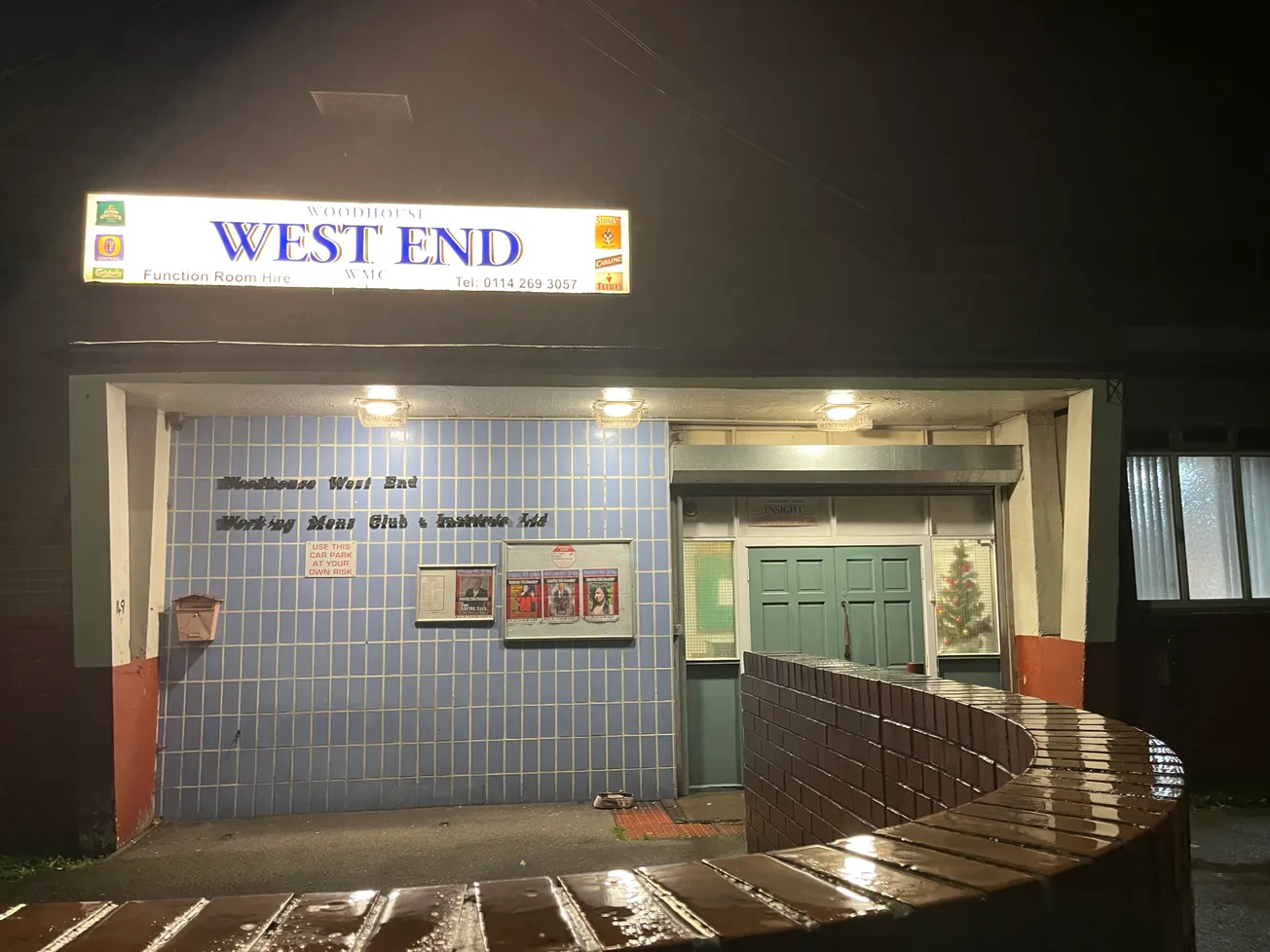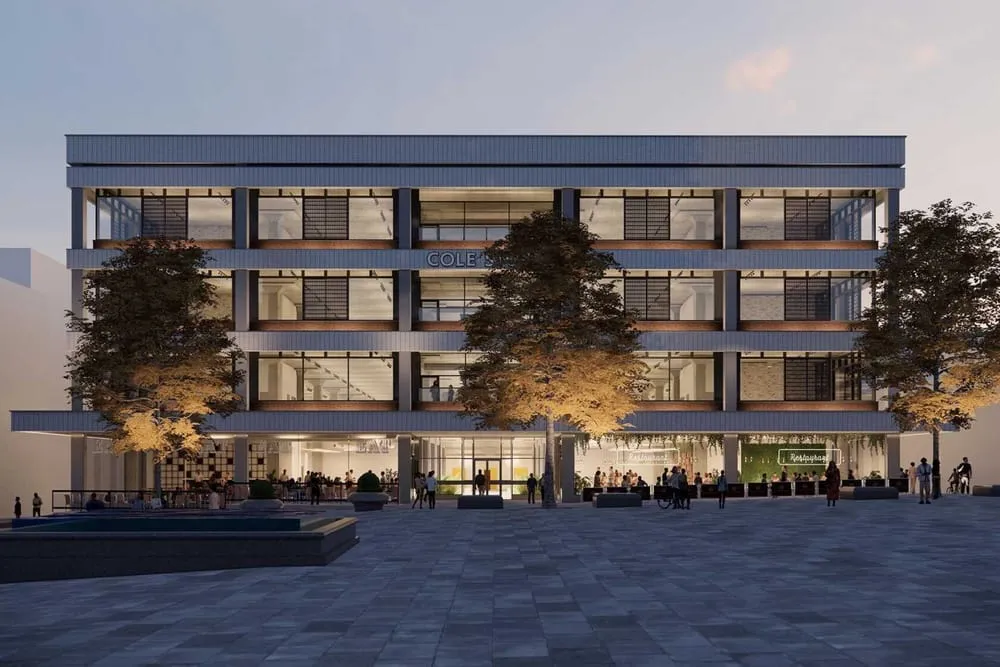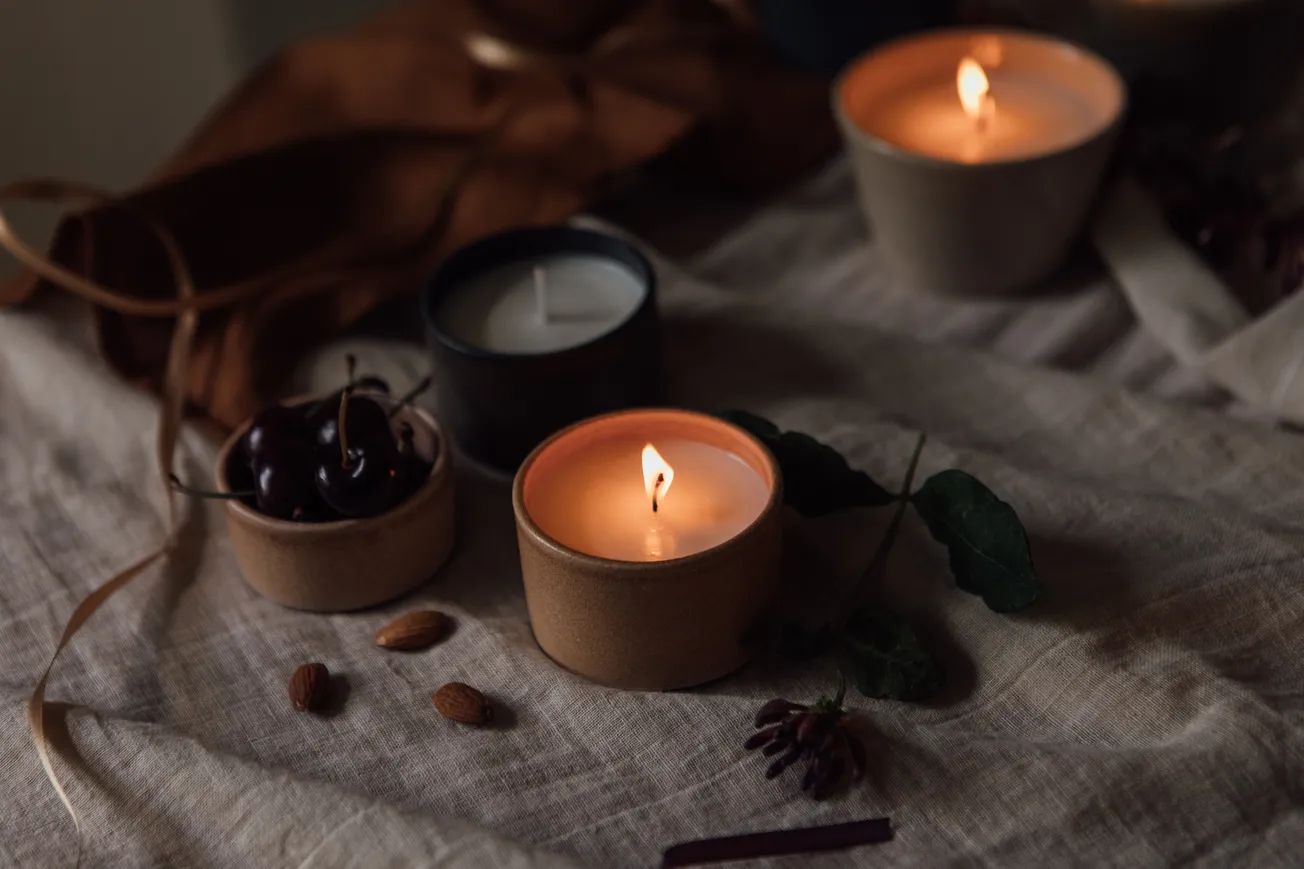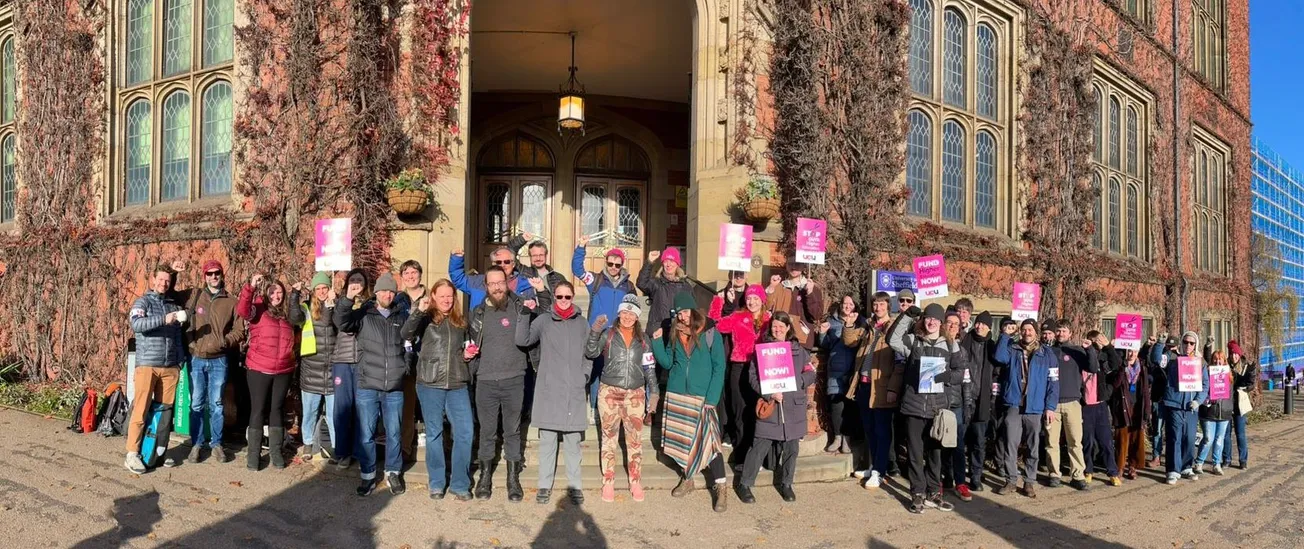At first the smell is slight enough that I think I’m imagining it, but it grows stronger as I head down the steps to the maisonette block on Plowright Close. Now that I'm closer, it's unmistakable: Raw sewage is bubbling up from the footpath and collecting outside residents’ front doors.
“It’s been like this since before Christmas,” says Lisa Bird, who lives in the bottom floor end flat, a well-maintained property with a tidy garden and brand new shed. “We’ve been on to the council but nothing gets done. My partner says she’s going to get on to MP Louise Haigh next. Pester her on Twitter.”
The problem is being caused by the people above putting wet wipes down the toilet which then block the drains and cause leaks. Lisa’s appeals to her neighbours to stop have so far fallen on deaf ears. “It’s a lack of respect,” she says. “People in the past looked out for each other. That strong community that used to be here has gone. Like it has everywhere, I suppose.”

Lisa is one of the last people I speak to after my third trip to the Gleadless Valley in two days. During that time (probably aided by the blue winter skies) I’ve enjoyed a largely positive impression of the place. But Lisa’s horrendous sewage issue is a reminder of the grim realities of life on the estate for some of its residents.
Join The Tribune’s free email list to get high-quality journalism about Sheffield in your inbox every week, or join us as a member to receive all our reporting
The area’s problems are well-documented. According to government figures, “the valley” as everyone calls it is one of the most deprived wards in the UK. And within Sheffield it has something of a reputation as well. Fairly or unfairly, in many Sheffielders’ minds it has become synonymous with crime and anti-social behaviour as well as a myriad of social problems including unemployment and poor health.
This image isn’t helped much by the media. When I was at The Star, the only time I visited was when something bad had happened. The murder of 22-month old Erin Tomkins by her stepfather Martin Johnson in 2018 understandably shocked the city. But drug raids happen with depressing regularity. Violent attacks also sometimes take place including stabbings, shootings and once, in 2016, an axe attack.

Incidents such as these have produced a popular image of the Gleadless Valley as a “sink estate.” In 2012, the Yorkshire Post reported that Tesco had stopped delivering to addresses on the estate after claiming their drivers had been attacked with stones and had goods stolen from their vans (a claim which was later denied by both police and councillors).
And just last year Yorkshire Live ran a story about one Gleadless Valley street — Middle Hay View, where a flat sold last April for £50,000 — being the cheapest in the city. The piece is actually fairer than the headline (“What it's like to live in the cheapest street in Sheffield dubbed an 'utter shithole’ by residents”) would indicate. Although pictures of a burnt out car and discarded sofas burnish the article’s “poverty porn” vibe.
While the estate clearly has problems, it’s a long way from the “Wild West” image peddled by the media. On two beautifully sunny days earlier this week, the valley’s reputation seems worlds away from the reality. I even head back one evening to see if the area’s well-publicised problems are more visible at night and witness nothing more untoward than the odd car being driven over the speed limit.

Like any other estate, there are nice bits and not so nice bits. The maisonettes and six-storey blocks along Blackstock and Ironside Roads seem to be the least well looked after. Whereas the patio houses near the church and the three-storey cluster blocks are among the best. In the former parts of the estate, poverty and deprivation is becoming deepened and entrenched.
Several residents tell me the Newfield Green shops at the top of the estate are a particular issue. When I go there, a man walks back and forth cradling a can of Kestrel Super Strength tight to his chest. Nearby three young men form a wind barrier so one of them can roll a joint. What’s it like round here, I ask a man who has just left his flat and is on the way to pick up his son from nursery. “Depends on the day,” he replies.
I’ve come to the Gleadless Valley because it’s 60 years old — or approximately that age, anyway (the estate was actually built over seven years between 1955 and 1962). Like many other developments of the period, it was part of the postwar utopian vision of good housing for all. But unlike many of the new high-rise developments that sprung up around that time (think Park Hill flats), in the Gleadless Valley, a suburban model was followed.


I’ve been here many times before — sometimes while reporting for The Star, sometimes simply to use the household waste recycling centre nearby — but up until now, I’ve never really looked at it. The whole development from the Callow Mount high rises to the Herdings towers (the highest man-made point in the city) is just about a mile in length. It’s set in a steep-sided valley that was once farmland but had been discounted for development until Sheffield’s needs for new housing became desperate.
Just walking around the estate, you are immediately struck by the sheer amount of different housing types that are utilised, each designed to fit in a separate part of the sloping valley side. Houses nestle into hollows in the landscape and flats follow ridge lines at the top of slopes. When designing the estate, city architect J.L. Womersley reportedly followed the “plant the tops, flood the valleys” maxim laid down by 18th century landscape gardener Capability Brown. (For anyone unacquainted with 18th century gardening advice: this translated to situating tall plants at high points; smaller plants at the bottom — swap out “plant” for “building” for a sense of Womersley’s vision).
Unsurprisingly, it is a development which sends modernists into ecstasies. The Guardian’s architecture critic Owen Hatherley has called it a “bizarre and beautiful landscape,” suburban hilltop modernism full of oddly-shaped houses and flats built into the landscape. Historian John Boughton, the author of Municipal Dreams: The Rise and Fall of Council Housing, has called it “one of the outstanding council housing schemes of the last century.”

And as well as the built environment, many natural features of the landscape are retained and utilised as well. The centre of the valley boasts a huge patch of woodland while the various developments are separated by generous expanses of grassland. These elements conspire to give the valley an almost pastoral air. From the top of the estate the views of the other side of Sheffield and the Peak District beyond that are stunning.
Keith Marriott, who moved to the estate as a three-year-old in 1961, tells me when he was growing up there in the 1960s and 1970s, the estate was “in its heyday” but that in recent years it has become neglected. This decline has taken place as Sheffield has struggled with the loss of traditional industry and more recently the impact of austerity.
“Back in those days there was quite a wide social range, from unskilled manual workers to low-level clerical staff like my mum and dad,” he says. “Social housing wasn’t seen as a last resort, as it is now. People enjoyed living there and looked after their houses.”

Keith’s experience was by no means a unique one. As John Boughton has noted, many of the early residents believed they lived in “the finest estate in the city,” praising its good quality housing and facilities as well as the “the attractive surroundings, greenery and open views.”
Amid all the change, one of the constants has been A.E. Hartley’s grocers on Blackstock Road, which celebrated its 60th anniversary in 2020. Janet Hartley remembers the estate when it was first built. “It was beautiful,” she tells me. “The woodland and wildlife in the valley was amazing. We even had two fountains outside the shop. There was a 12-year waiting list to get a house here.”
Across the road at Gleadless Valley Methodist Church, however, indications of the area’s current struggles are in evidence. Volunteers at the Trussell Trust foodbank are busy preparing bags to go out to families on the estate. I’m introduced to the church’s new Deacon, Annabel Terry, who tells me the level of need in the area is high.

“A chap came in on Monday who hadn't eaten all weekend,” she tells me. “He couldn’t get to the foodbank on Friday because he’d been isolating so he just had to go without. But as well as the high levels of need, there is a strong level of community as well. Lots of the people who have used the foodbank later become volunteers.”
As I’m walking up Spotswood Mount the day before, a pink kite flies over Holy Cross Church, the estate’s iconic modernist chapel. As the kite dances in the strong winds, jagging this way and that, I manage to locate its owner. Marcus Pereira is originally from Brazil and his kite — made to a traditional Brazilian design — is little more than two curved pieces of fibreglass and a plastic carrier bag.
Marcus, who has been in the UK for eight years and works on the Covid ward at the Royal Hallamshire Hospital, says he likes the valley, but that you need to be careful. “I wouldn’t be flying my kite after dark here, that’s for sure,” he tells me. “I’ve seen some stuff.” Like what, I ask. “Someone breaking a car window with a samurai sword. Mostly bored kids causing trouble.”

Marcus’ presence here is an indication of another of the major changes the area has witnessed over the last six decades. What was once an entirely white working class population has turned into one that now houses people from across the world.
And there are more internationals at the church. The Sheffield Association for the Voluntary Teaching of English (SAVTE) is holding a class. Attendees in the hall hail from all over the world, but the people who I speak to have come to Sheffield from the Democratic Republic of Congo.
While there are newcomers, it’s striking how many of the people I speak to have been there for decades: 30, 40, 50 years or more. And this is surely what those who planned and created the estate would have hoped for. For people to make a life there: to lay down roots, be happy. The changes that the Gleadless Valley and Sheffield have had to cope with over the last 40 years would have caused problems anywhere. But walking round the estate, it feels difficult to conclude that the experiment has failed.

Just as I’m about to leave, a woman and dog emerge from the wood at the base of the valley itself, a deep scar in the landscape that bisects the two halves of the estate. She doesn't want to give me her name but is happy to talk about her 56 years on the estate, as long as Sky the border collie will let her.
The woman tells me about all of the things she has loved about the Gleadless Valley: the sense of community she found when she first lived here and kids played together in the street; as she got older, exploring the woodland up and down the valley, and walking in the fresh and clean air high above Sheffield.
The beautiful natural environment of the valley is still the same, she says, but greater individualism means much of that community feeling has now gone. “Things have changed,” she tells me, as Sky finally succeeds in dragging her off in the direction of the estate. “But I love it and I wouldn’t live anywhere else.”
Join The Tribune’s free email list to get high-quality journalism about Sheffield in your inbox every week, or join us as a member to receive all our reporting
Comments
How to comment:
If you are already a member,
click here to sign in
and leave a comment.
If you aren't a member,
sign up here
to be able to leave a comment.
To add your photo, click here to create a profile on Gravatar.


